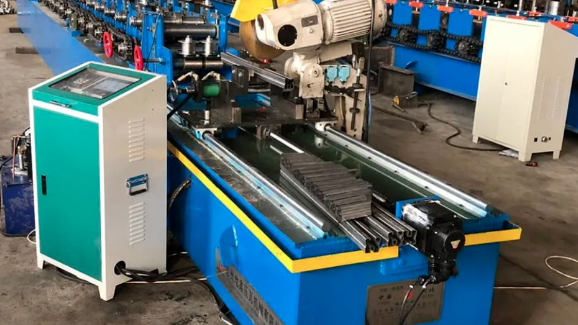
Posted on Monday, September 30, 2024
When it comes to roll forming machines, manufacturers and contractors have two main options: standard machines and custom-built machines. While both types are capable of producing high-quality metal components, they serve different purposes and cater to varying needs. In this blog, we’ll explore the key differences between standard and custom roll forming machines, helping you determine which is best for your project.
Standard roll forming machines are designed to produce commonly used metal profiles and shapes found in a wide range of industries. These machines come pre-configured with dies and tooling that allow them to produce profiles such as roofing panels, purlins, gutters, metal studs, and deck panels. They are a great choice when you need to produce high volumes of standard products quickly and efficiently.
Custom roll forming machines are built specifically to meet unique design or production requirements. These machines offer complete flexibility in terms of profile design, tooling, and production capabilities, making them ideal for businesses that need to manufacture specialized components or operate in niche markets.
Choosing between a standard or custom roll forming machine depends on your project’s needs and budget. If you produce common metal profiles at high volumes, a standard machine may be the perfect solution. However, if you need flexibility, precision, or the ability to produce custom profiles, investing in a custom roll forming machine will provide the tailored solution you need to meet unique production challenges.
In conclusion, while standard roll forming machines offer quick setup and cost savings for common profiles, custom roll forming machines provide the versatility and precision required for unique and complex projects. Understanding the differences will help you make the right choice to meet your production goals.
If you’re unsure about which type of machine is best for your business, our team at MachineMatcher is here to help you assess your needs and find the right solution. Whether you need a reliable standard machine or a fully customized system, we can provide expert guidance every step of the way.

32/1000 Box Profile Roll Forming Machine – Complete Guide & Specifications
Posted on Sunday, November 16, 2025
High-performance 32/1000 box profile roll forming machine for roofing and cladding. Full specifications, profiles, applications, pricing

PBR / R-Panel Roll Forming Machine – Complete Guide & Specifications
Posted on Sunday, November 16, 2025
PBR / R-Panel roll forming machine for roofing and wall cladding. Full specs, profiles, applications, pricing, and global buying guide. Built to order.

Posted on Sunday, November 16, 2025
How to Diagnose and Fix the Hidden Electrical Problems That Cause Downtime
Copyright 2025 © Machine Matcher.